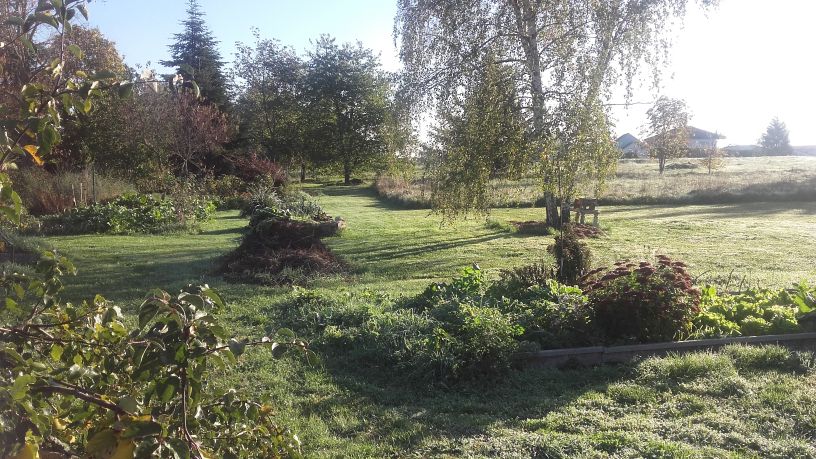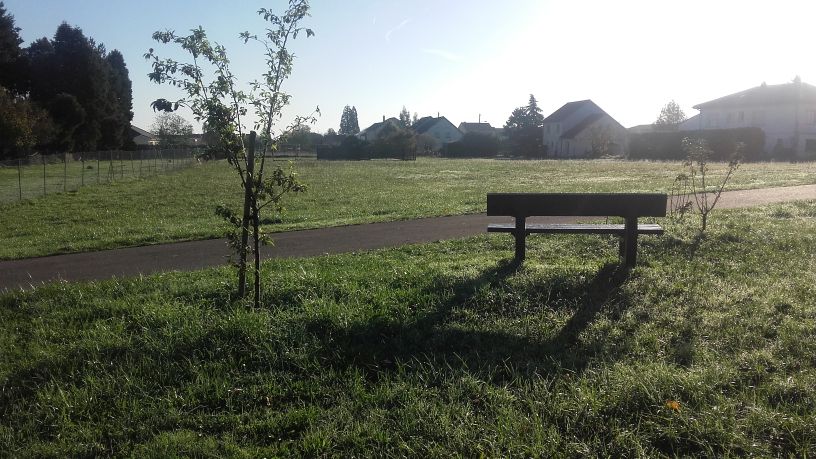Net-zero neighborhood pilot project
Motto: Optimum comfort with the smallest possible environmental footprint and energy consumption
As mentioned in the introduction to the German book "Energy Transition and Social Change", we are not pursuing a theoretical goal, but would like to put the findings of the book into practice.
Therefore, several households plan to set up a residents' cooperative or condominium that pursues the goals of the 2000-watt neighborhood as far as possible. It should be both environmentally friendly and have a very small CO2 and energy footprint. Hopefully, urban people will find the way of life attractive in order to spread the model around big cities.
One of the available plots of 10000 m² is between 10 and 15 minutes walk from a kindergarten, a primary school, a high school, a bakery, a pharmacy and a supermarket. The train station, the theater and a ballet-school can be reached by bike in 10 minutes. A bus stop is a 5-minute walk from the property.
One of the plots has space for several buildings, each with a 4 apartments or houses on 2 floors. The buildings must comply with the French RT2020 standard (heating lower than 15 kWh/m²/year). The private living space is below the French average, but the buildings should contain some common infrastructure: DIY workshop, sewing workshop, party room with kitchen, library, studios for visitors or Airbnb, terrace with pergola, park with playground, etc. The aim is optimal use of objects and infrastructure with a low ecological footprint, which also allows a good life for people with low income.
 Example of a common room with kitchen for meetings, family-gatherings and parties.
Example of a common room with kitchen for meetings, family-gatherings and parties.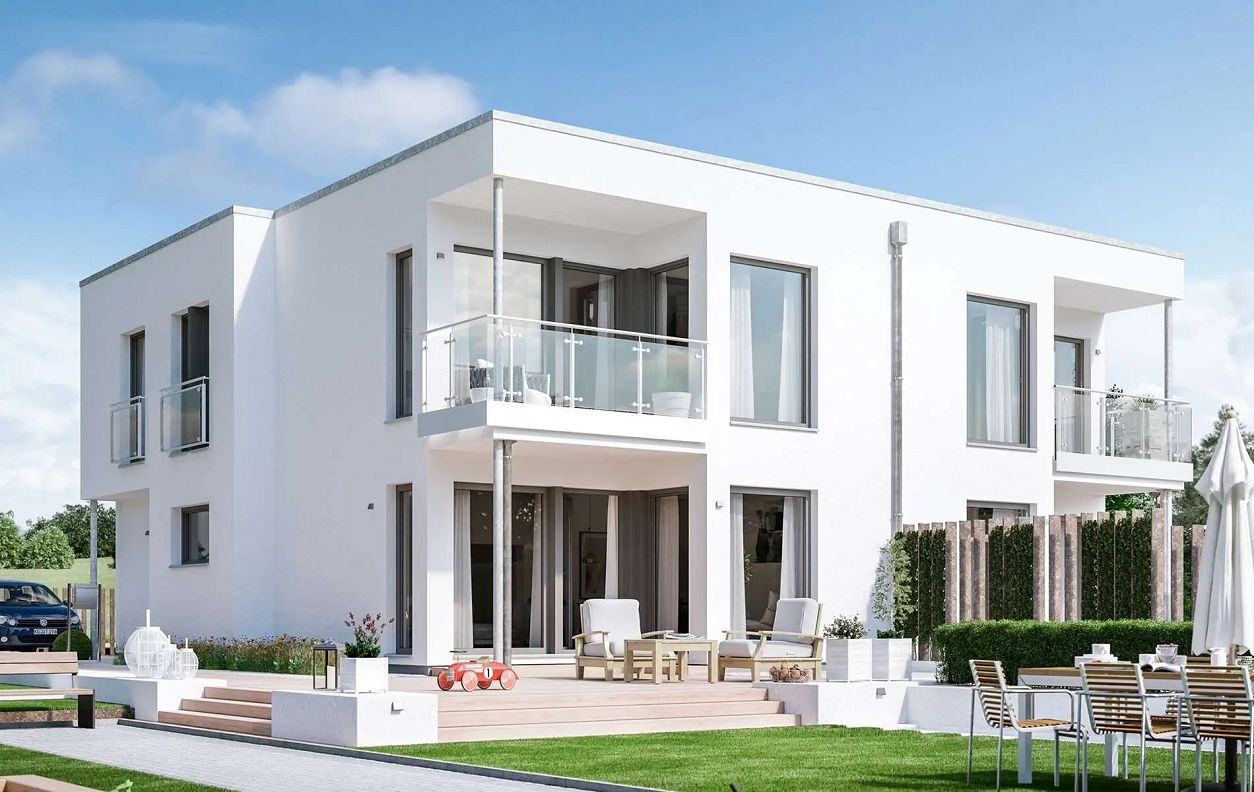 Example of a 3 or 4-family house with excellent thermal and noise insulation to guarantee privacy.
Example of a 3 or 4-family house with excellent thermal and noise insulation to guarantee privacy.
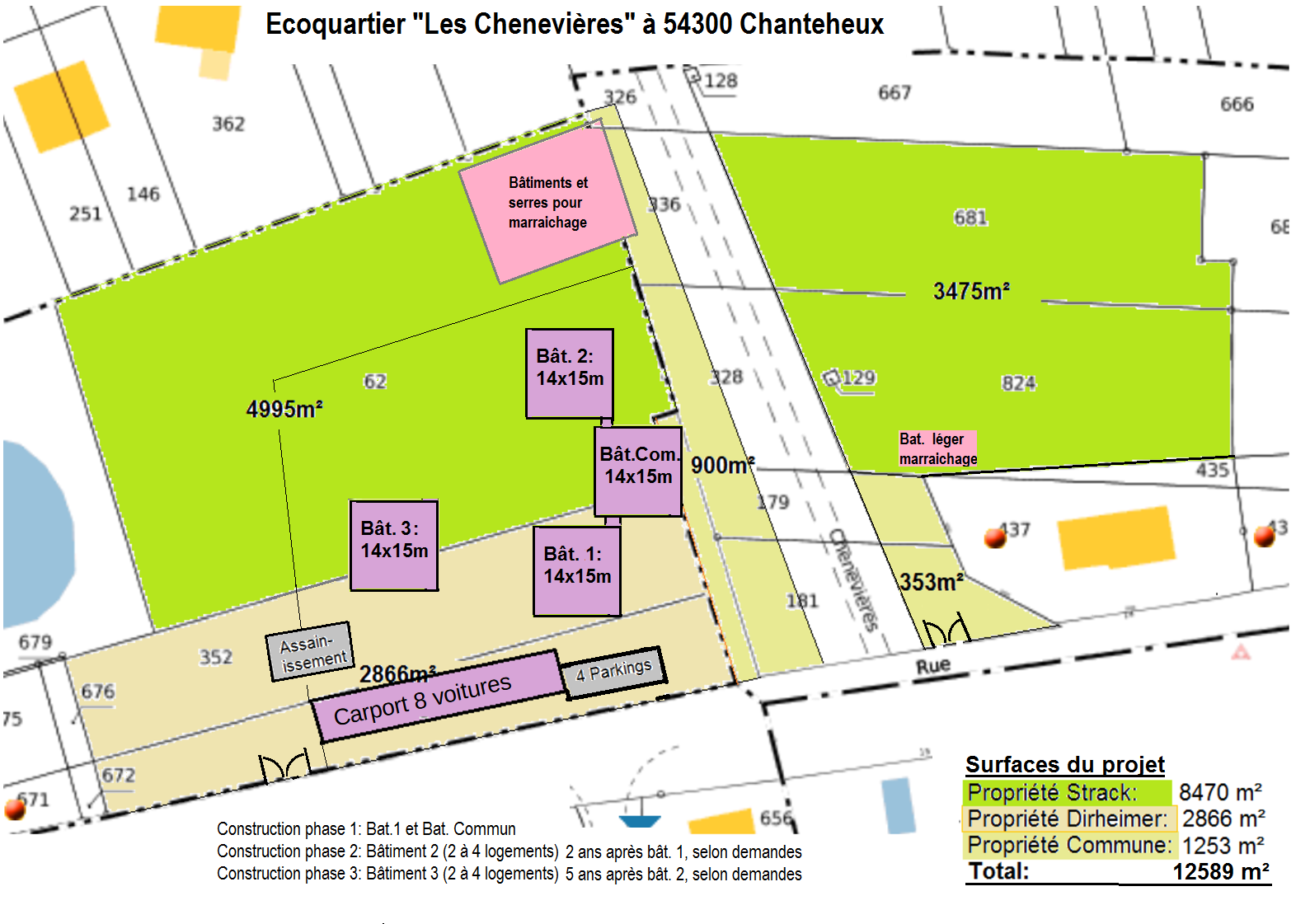 Plan with 4 buildings as accepted by the authorities. Building "Bât Com" contains shared rooms, such as a party room with kitchen, workshops and guest-rooms.
Plan with 4 buildings as accepted by the authorities. Building "Bât Com" contains shared rooms, such as a party room with kitchen, workshops and guest-rooms.
Four such buildings for 12 to 16 apartments will be connected by common infrastructures. The individual living space will be smaller than the French average, but the common infrastructures will give more comfort and options than French average.
Instead of concrete underground garages, a large wooden carport could be built, covered with photovoltaic panels. 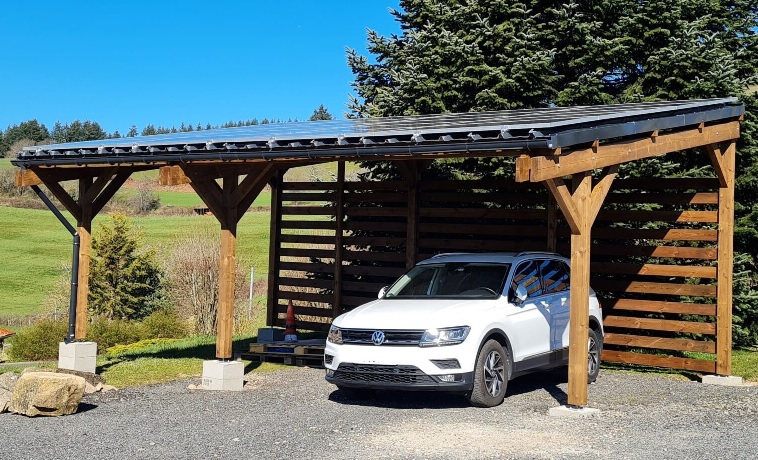 Some charging stations for electric cars could be installed under the carport.
Some charging stations for electric cars could be installed under the carport.
If a member of the housing cooperative or condominium wants to try gastronomy and all other members of the residents' cooperative agree, parts of the common infrastructure could be used as a restaurant from 1 time a month to 3 times a week. Some households of some housing cooperatives employ a cook 3 or 4 days a week to do the cooking of a meal for them. Common infrastructures allow different kind of experiments if everybody agrees.
A large part of the land is used for growing vegetables and fruits. The plots have a lot of groundwater for irrigation during dry summers. A well 4 m deep can supply at least 8 m3 of water per hour, even during dry and hot summers.
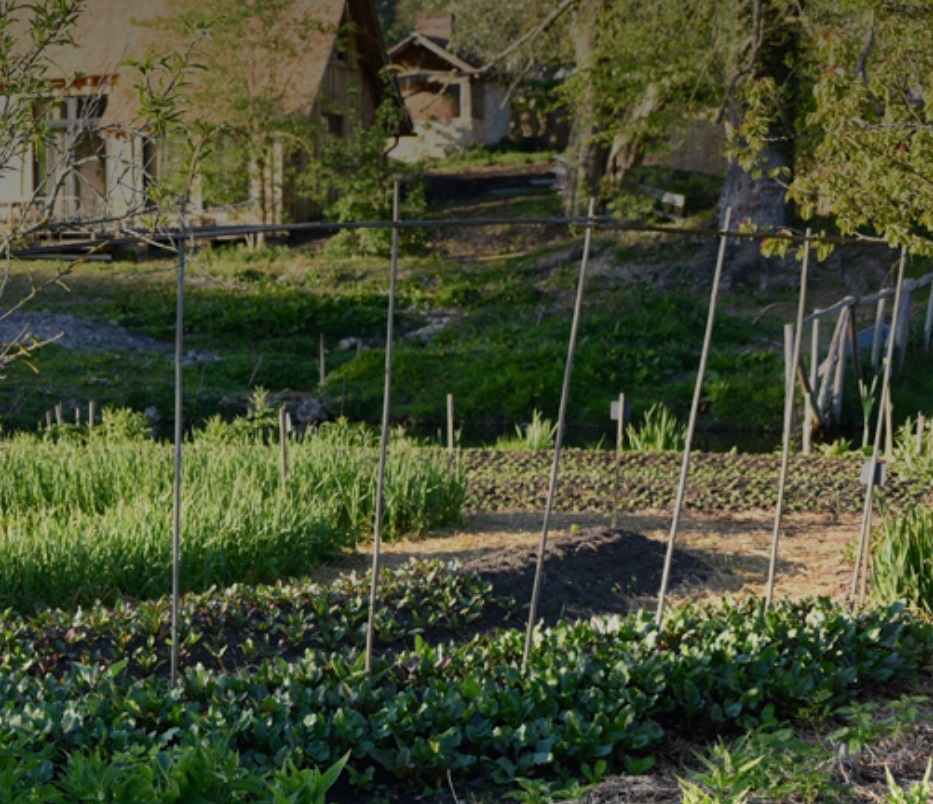 Micro farm "Bec Helloin" produces organic vegetables with high yield.The land for growing vegetables can either be bought privately, from a cooperative, or leased from the current owner. The residents' cooperative could offer the market gardeners a point of sale if they wished it. This project, like everything else, will be discussed and adjusted by the future members of the residents' cooperative and/or by the members of the gardeners cooperative.
Micro farm "Bec Helloin" produces organic vegetables with high yield.The land for growing vegetables can either be bought privately, from a cooperative, or leased from the current owner. The residents' cooperative could offer the market gardeners a point of sale if they wished it. This project, like everything else, will be discussed and adjusted by the future members of the residents' cooperative and/or by the members of the gardeners cooperative.
Since the energy consumption is roughly proportional to the money spent, the running costs should be as low as possible. Fiber subscriptions could be shared. Water management should be optimized as it reduces operating costs and saves a lot of drinking water. The city council has already given the go-ahead to set up an on-site wastewater treatment system that also recovers rainwater, as successfully implemented by a cooperative in Geneva. The system is "low tech" and was designed by the Swiss Federal Institute of Technology.
Another idea concerns water management, which could be optimized to reduce operating costs. We also want to create a wastewater sanitation and rainwater recovery system on site, as was created by a cooperative in Geneva (Equilibre; rue Soubeyran). The cooperative in Geneva recovers rainwater and organic matter from homes and toilettes, which is used in agriculture after a two-way composting. The farmer can thus reduce the use of chemical fertilizers or get rid of it altogether. The manufacture of nitrogen fertilizers for industrial agriculture consumes too much energy (natural gas). The sanitation system also makes it possible to divide residents' water bills by two or three. Our Municipality has also expressed an interest in this sanitation system. The system is low-tech even though it was designed by the Swiss Federal Institute of Technology of Lausanne. The system has no pumps.
Theoretical carbon footprint of the project
Out of pure curiosity and without any obligation for the future project, the CO₂ footprint of the way of life in such a neighborhood was simulated on the French ADEME website. The website does not allow simulating reduced water use and production of toilette compost. The most important parameter for the choice of an electric car would be the number of charge/discharge cycles. With 10'000 cycles and 200 km per cycle, the car could drive 2 million km and have a theoretical lifespan of a century, if everything fits perfectly together. The ADEME website cannot simulate that either. Otherwise, we made the following assumptions for the carbon footprint simulation :
- Mobility: 1 Small electric car per household. Each inhabitant travels an average of 5000 km per year with a car. If one inhabitant drives 1000 km only, another may drive 9000 km per year. During the day, the cars are recharged via the neighborhood's solar panels to avoid losses due to the storage of electricity in a far away water pump power station for charging during the night. Train journeys: 2000 km per year per person. One electric bike per person, driving 800 km per year.
- Diet: Seasonal and local cuisine with little meat. Some of the food is produced and the land of the cooperative by professional gardeners.
- General consumption: Very little waste is produced and only few new equipments are purchased, since most of the expensive equipments with a long lifespan belong to the housing cooperative or condominium. Composting of organic waste for the vegetable gardeners.
Simulation result: 1.9 tons of CO₂ per year and per person. That does not include French state services (1.6 tons of CO₂ per year). Such a way of life can therefore be considered sustainable, provided that the government and the industries also makes some efforts. In addition, the energy mix of countries exporting products to France must further decarbonize their economies in order to achieve 2 t CO₂ per year.
Comparison: Pilot project : 3.5 t of CO2 per year, including 1.6 t for the state (ADEME).
The "average" French citizen emits 9 t of CO2 per year (INSEE), the "average" German 11 t, the American 15 t, a Chinese 7 t, an African outside South Africa 1.5 tons of CO2 (statistica).
Since the carbon footprint and energy consumption correlate with living costs, the project is also open for people with a lower income.
We will begin to work out the detailed specifications of this project as soon as 8 households have expressed their interest. We are therefore looking for people interested in such a residents' cooperative or condominium. Curious or interested people can contact us via the contact menu of this website. We usually reply within a day.
The project will be carried out in two or three stages, depending on the number of people participating from the start.
Photos of the available building land of 12'000 m²
